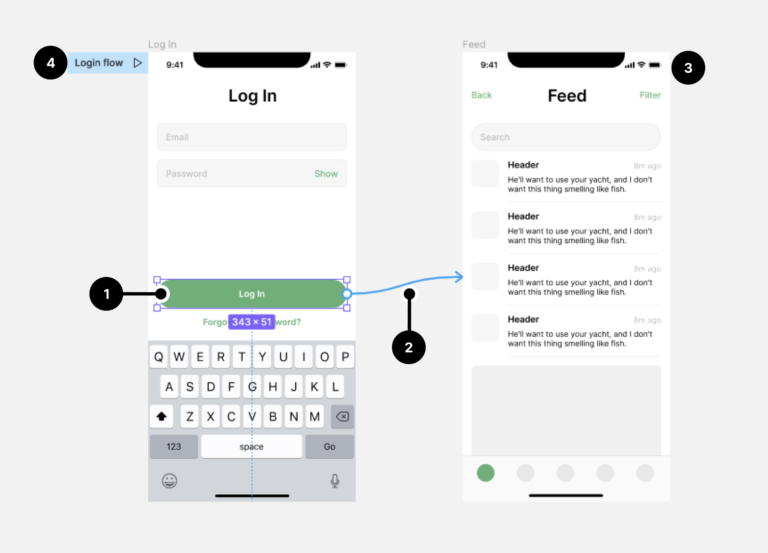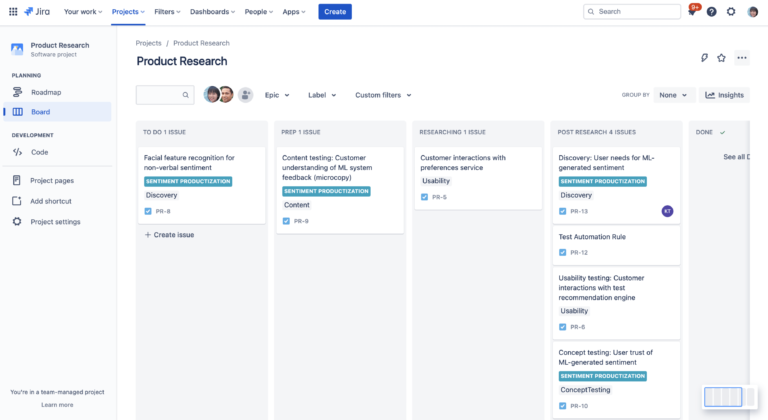Project Management
Key takeaways
In this article…
What is rapid application development (RAD)?
Rapid application development (RAD) is a project management methodology that focuses on ongoing software projects and user feedback instead of a strict plan or set of steps. The RAD approach involves releasing a successive set of prototypes and getting feedback from clients and/or end users on each iteration.
The RAD model was formally developed by James Martin in 1991; however, the ideology behind RAD emerged in the 1970s and 1980s in response to the waterfall methodology’s rigid approach. RAD’s flexibility as a methodology has allowed it to evolve alongside the software development industry, and it looks different now than it did at its inception nearly 30 years ago.
Today, software developers use RAD for a variety of projects, especially those that heavily depend on user requirements. RAD is a very popular software development approach since it encourages nimble processes that respond quickly to changes and feedback.
Steps in rapid application development
1. Define project requirements
In this stage, the developers, end users, clients, and other stakeholders work together to define the scope and requirements for the product. This includes timeline, budget, goals, expectations, and any other relevant information. These requirements can change while reviewing the prototypes — a facet that drives RAD’s flexible approach.
2. Create prototype(s)
In the second stage, developers build an initial prototype that fulfills the requirements established in step one. The ultimate goal of this step is to produce a working prototype, though only certain aspects of it may be functional. For example, Figma lets you create an interactive mockup that mimics isolated behaviors to get focused input from stakeholders.

3. Gather feedback
In the third stage, the client and/or end users provide feedback and request changes to prototype elements individually or the project overall. Developers then take this iterate on the previous prototype to incorporate the necessary changes. This cycle continues until everyone is satisfied with the prototype.
4. Finalize and implement the product
In the last stage, the final prototype is pushed into development. The team tests the software for bugs and fixes problems as they arise. Once a stable version is ready for launch, the system changeover and user training commences.
Rapid application development vs. Agile
While RAD and Agile have some overlap as project management methodologies, there are distinct differences that set them apart:
| RAD | Agile | |
|---|---|---|
| Best for | Small projects with narrow scopes | Complex projects with large scopes |
| Timeline | Short | Long |
| Project requirements | Defined early, adjusted during prototyping | Refined as the project progresses |
| Stakeholder review | Prototypes presented before development | Working product presented during development |
| Feedback | Collected for each prototype | Collected continuously |
For starters, Agile is an umbrella methodology that encompasses several other models like Scrum and Kanban. Agile places less emphasis on gathering user requirements than RAD, so Agile may be more suited to nebulous projects where the requirements are not well defined at the start.
With Agile, developers often focus on building the most difficult part of the product first, while the RAD approach usually starts with the easiest component.
Whereas RAD is focused on speed and generating prototypes as quickly as possible, Agile breaks down the entire project into fixed sprints. Because of its reduced emphasis on speed, the Agile methodology is better able to accommodate big changes during the development process.
Agile also depends on user feedback, similar to RAD, but it’s collected and implemented continuously rather than waiting for each prototype to be done. Agile projects allow for greater flexibility if the needs of a project change mid-development, but it also risks wasted time and resources.
To get the best of both worlds, some development teams combine RAD and Agile methodologies to fit their needs. Software developers may use a RAD approach to develop specific features while relying on Agile for the core product as a whole.
RAD requirements
To be successful with RAD, your project should involve experienced team members, engaged stakeholders, short timelines, and the right software.
Experienced team members
The RAD model works best if your development team leader(s) and at least some of the members already have experience using the RAD approach. Newbies may have a hard time staying focused on delivering a working prototype in the short-term and resist being distracted by long-term development goals. Quick iteration sometimes requires an experienced leader to keep everyone on track.
Engaged stakeholders
Since the RAD approach relies on prototype feedback, your clients and other stakeholders must be hands-on and prepared to give feedback quickly. They should be available to review and test a new prototype as soon as it’s ready.
Short timelines
RAD-driven products must be built quickly — usually 2–3 months from start to finish. For this reason, RAD often works best for low-risk projects that are narrow in scope. The product should not be mission critical in case aspects of the prototype aren’t immediately functional.
Effective tools
Finally, your team must have the right software to implement the RAD methodology effectively. Developer-specific tools such as Jira offer bug tracking, project templates, and other features that support RAD. Perhaps most importantly, the software should integrate with your prototyping tools and incorporate workflow automations that streamline update notifications when a new prototype is ready.

Benefits of rapid application development
RAD offers many advantages, especially compared to traditional waterfall approaches:
About the author


